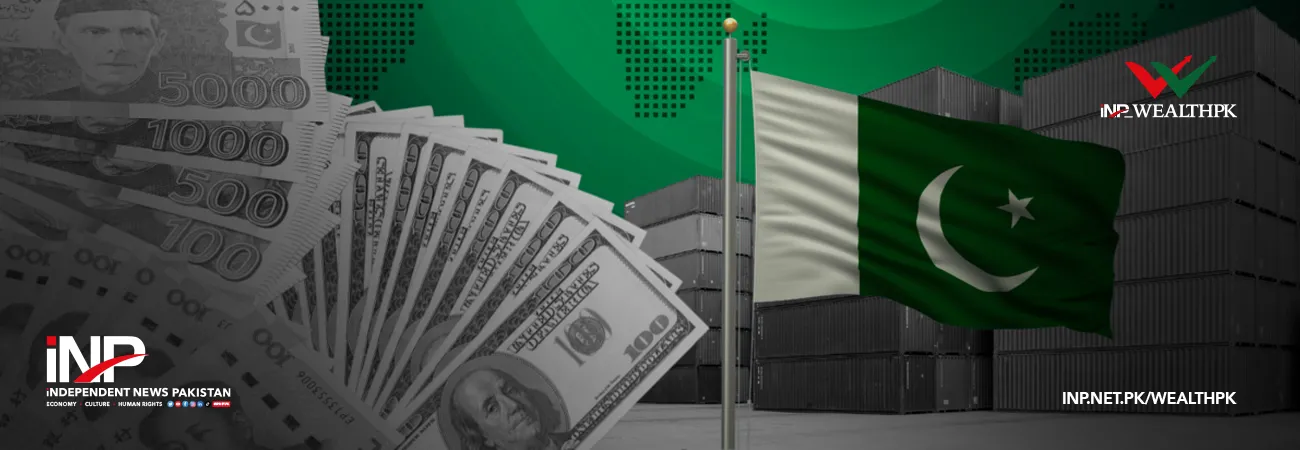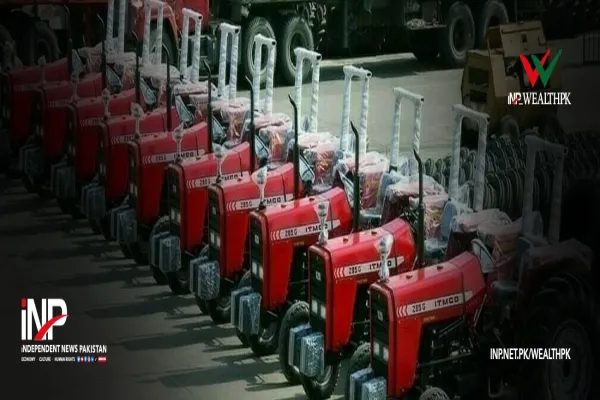i INP-WEALTHPK
Ayesha Saba
Pakistan’s economy has long been trapped in boom-and-bust cycles, marked by instability and a heavy reliance on external borrowing. To pave the way for sustainable growth, experts emphasize the need for a shift towards export-led growth and increased foreign direct investment (FDI), reports WealthPK.

Pakistan’s economy has been marked by significant fluctuations, often swinging from periods of rapid growth to sharp downturns. This instability has hindered long-term planning and investment, leaving the country vulnerable to external shocks. A central issue contributing to this volatility is the ongoing trade deficit, which results from the inability to produce enough goods domestically to meet the rising demand, noted economic expert and researcher Mehmood Khalid at the Pakistan Institute of Development Economics (PIDE). “For Pakistan, a robust export sector could mean significant revenue generation, which is crucial for balancing budgets and transitioning towards industrialization. Currently, the textile and garment sectors dominate Pakistan’s exports, making them essential for job creation and poverty alleviation. “If Pakistan is to take its place among the large economies of the world in another 25 years, it will have to break out of this vicious cycle.
This will require difficult decisions with long-term impacts, which may have a negative shortfall in the immediate future. Pakistan will have to control the twin deficits, i.e., fiscal and current account,” he said. According to the Pakistan Economic Survey FY24, the government aims to enhance exports by leveraging improved global trade conditions and strengthening the domestic supply chains. This aligns with the World Bank’s call for an ambitious reform agenda that prioritizes macroeconomic stability and poverty reduction. A comprehensive approach that includes improving the business environment and implementing targeted trade policies could stimulate exports. Talking to WealthPK, Raja Aamer Iqbal, ex-president of Rawalpindi Chamber of Commerce and Industry (RCCI), said, Pakistan is currently trapped in a cycle of low savings and low investment, significantly limiting its economic potential. The prevailing economic conditions have created a discouraging environment for both domestic and foreign direct investment.
Additionally, the shrinking fiscal space presents a major challenge to maintaining even the already low levels of public investment in initiatives that support the Sustainable Development Goals (SDGs). The country’s investment-to-GDP ratio has stagnated between 14% and 15% compared with Bangladesh, which boasts a significantly higher investment-to-GDP ratio of 30.5%. To address these challenges, he argues that it is imperative for Pakistan to undertake comprehensive structural reforms to reduce these deficits within a short timeframe. The government is urged to implement reforms, particularly in the fiscal sector, and diversify exports to help the economy escape the boom-and-bust cycle. “The key areas for improvement include enhancing efficiency, lowering the cost of doing business, improving the regulatory framework, boosting productivity, and increasing overall investment. These reforms are essential for achieving sustainable economic growth and ensuring a more stable future for Pakistan,” he suggested.
Credit: INP-WealthPk









